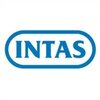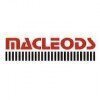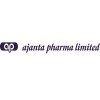
i
Zydus
Lifesciences
Filter interviews by
Zydus Lifesciences Officer Interview Questions and Answers for Freshers
Zydus Lifesciences Officer Interview Experiences for Freshers
2 interviews found
I applied via Walk-in and was interviewed in Mar 2021. There were 3 interview rounds.
Interview Questionnaire
5 Questions
- Q1. Simple chemistry questions were asked as I was fresher
- Q2. Such as boiling point of various solvent such as methanol, ethanol , toluene, IPA etc
- Q3. Safety related topics were also asked
- Ans. Normality, Molarity , Molality and also the difference between them
- Q4. What is density
- Ans.
Density is the measure of mass per unit volume of a substance.
Density is calculated by dividing the mass of a substance by its volume.
It is a physical property that can be used to identify substances.
The density of a substance can change with temperature and pressure.
Water has a density of 1 gram per cubic centimeter.
The density of air is much lower than the density of water.
- Q5. What is molecular weight and molecular weight were asked of some compounds
Interview Preparation Tips
Interview Questionnaire
1 Question
- Q1. Technical releted and master of science related
Interview Preparation Tips
Top trending discussions






Interview questions from similar companies

I applied via Referral and was interviewed before Dec 2019. There was 1 interview round.
Interview Questionnaire
3 Questions
- Q1. Why should we hire you.
- Ans.
I bring a unique blend of skills, experience, and passion that aligns perfectly with your organization's goals and values.
Proven leadership skills demonstrated through my role as a team lead in previous projects, where I successfully managed a diverse group.
Strong problem-solving abilities, exemplified by my initiative in streamlining processes that increased efficiency by 20%.
Excellent communication skills, as shown i...
- Q2. What are your short term & long term goals.
- Ans.
My short-term goals focus on skill development, while my long-term goals aim for leadership and impactful contributions in my field.
Short-term goal: Enhance my technical skills through relevant certifications, such as obtaining a project management certification.
Short-term goal: Build a strong professional network by attending industry conferences and engaging with peers on platforms like LinkedIn.
Long-term goal: Aim f...
- Q3. When was this company established?
- Ans.
The company was established in 1990, marking the beginning of its journey in the industry.
Founded in 1990, the company started with a small team of dedicated professionals.
Initially focused on local markets, it expanded its reach globally by 2000.
The company has since evolved, introducing innovative products and services.
Interview Preparation Tips

I applied via Naukri.com and was interviewed in Dec 2020. There was 1 interview round.
Interview Questionnaire
1 Question
- Q1. Interview incident, oos, oot, GMP and GDP ICH GUIDELINES AND YOUR CURRENT HANDLING INSTRUMENTS
Interview Preparation Tips
Process wery difficult HUMMANERORR

I applied via Naukri.com and was interviewed in Sep 2020. There were 3 interview rounds.
Interview Questionnaire
1 Question
- Q1. During interview, only practical type questions was asked me. About SAP and and qualifications
Interview Preparation Tips

Interview Preparation Tips
You need to stay calm and should apply presence of mind. Please go through the job description thoroughly word-by-word and recheck your resume to ensure that you are a best-fit for the position.
Skills: Communication

Interview Questionnaire
2 Questions
- Q1. Define tablet Define suspension Define harness of tablet What are the famous brands of sunpharma Your good strength s Define nasal spray What are anticaner agents Define chemotherapy
- Q2. Define emulsion What is the difference between flocculated and defloccula
- Ans.
Emulsion is a mixture of two immiscible liquids, where one is dispersed in the other as small droplets.
Emulsion is a type of colloid.
It is formed by mixing two immiscible liquids, such as oil and water.
The liquid that is dispersed in the other is called the dispersed phase, while the liquid in which it is dispersed is called the continuous phase.
Examples of emulsions include milk, mayonnaise, and paint.
Flocculated emul...
Skills evaluated in this interview

I applied via Naukri.com and was interviewed before Aug 2020. There were 3 interview rounds.
Interview Questionnaire
4 Questions
- Q1. About ur self and basic knowledge about subject and calibrations and their parameters
- Q2. Calibrations
- Q3. Stability studies
- Q4. About daily work role in department
Interview Preparation Tips

I applied via Referral and was interviewed in Jan 2021. There were 3 interview rounds.
Interview Questionnaire
1 Question
- Q1. Tell me about yourself
Interview Preparation Tips

I applied via Recruitment Consulltant and was interviewed before Nov 2021. There were 2 interview rounds.

(2 Questions)
- Q1. 1 What is your job profile ? 2 Give brif introduction for your self ?
- Ans.
I am an Officer responsible for managing and overseeing various tasks and operations.
My job profile involves supervising and coordinating the work of staff members.
I am responsible for developing and implementing policies and procedures.
I handle administrative tasks such as budgeting, resource allocation, and performance evaluation.
I ensure compliance with regulations and maintain a safe and productive work environment...
- Q2. Give brief discussion
- Ans.
The question is not specified.
Interview Preparation Tips
Zydus Lifesciences Interview FAQs
The duration of Zydus Lifesciences Officer interview process can vary, but typically it takes about less than 2 weeks to complete.
Tell us how to improve this page.
Zydus Lifesciences Interviews By Designations
- Zydus Lifesciences Plant Operator Interview Questions
- Zydus Lifesciences Executive Interview Questions
- Zydus Lifesciences Assistant Manager Interview Questions
- Zydus Lifesciences Technical Assistant Interview Questions
- Zydus Lifesciences Medical Representative Interview Questions
- Zydus Lifesciences Officer Interview Questions
- Zydus Lifesciences Senior Executive Interview Questions
- Zydus Lifesciences Production Officer Interview Questions
- Show more
Interview Questions for Popular Designations
Officer Interview Questions from Similar Companies
Zydus Lifesciences Officer Reviews and Ratings
based on 239 reviews
Rating in categories
|
Senior Executive
1.9k
salaries
| ₹2 L/yr - ₹12.1 L/yr |
|
Assistant Manager
1.8k
salaries
| ₹5.5 L/yr - ₹18.2 L/yr |
|
Executive
1.3k
salaries
| ₹2.4 L/yr - ₹9.2 L/yr |
|
Deputy Manager
958
salaries
| ₹6.4 L/yr - ₹20.5 L/yr |
|
Officer
830
salaries
| ₹1.8 L/yr - ₹6.2 L/yr |

Cipla

Dr. Reddy's

Lupin

Sun Pharmaceutical Industries
- Home >
- Interviews >
- Zydus Lifesciences Interview Questions >
- Zydus Lifesciences Interview Questions for Fresher













